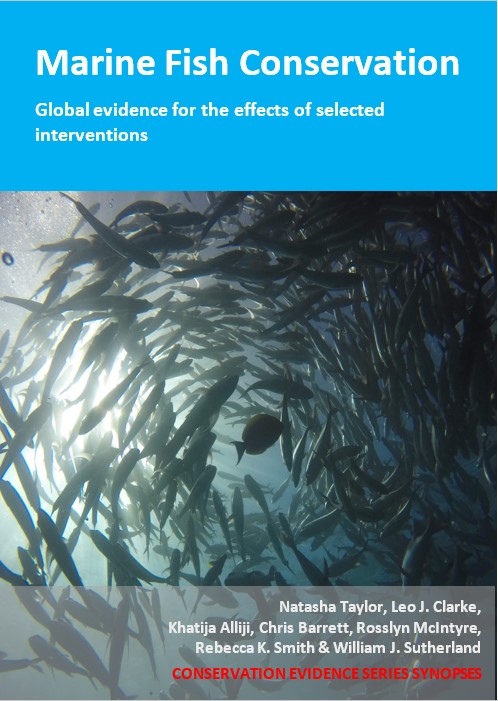Cease or prohibit all (mobile and static) fishing gears that catch bottom (demersal) species
-
Overall effectiveness category Awaiting assessment
-
Number of studies: 3
View assessment score
Hide assessment score
How is the evidence assessed?
-
Effectiveness
not assessed -
Certainty
not assessed -
Harms
not assessed
Study locations
Supporting evidence from individual studies
A replicated, paired, site comparison study in 2004–2005 of three seabed areas in the Greenland Sea, off the coast of Iceland (Jaworski et al. 2010) found that three marine protected areas closed to bottom gears (trawls and longlines) for at least 11 years had different fish densities and sizes of the most abundant bottom dwelling species, compared to adjacent areas outside, but the effect of depth or temperature was stronger than level of protection. Differences in fish density (mean log number) by size group were found inside areas closed to bottom gears compared to outside for two of nine species/groups in the closed area on the northwest coast, and for four of six in the other two closure areas on the northeast coast (see paper for species individual data). In the northwest, average fish size was similar between areas for eight of nine fish species/groups and smaller for one in the closed area; and for the two northeast areas, three of six fish species/groups were smaller inside one of the closure areas compared to the other and outside, and there were no differences for the other three (see paper for species individual data). However, the influence of temperature or depth on fish density and average size between closed and open areas was found in many cases to be higher than the level of protection (see original paper). Fish sampling was done by a research trawler: in August 2004 inside and outside one protected area off the northwest coast (41 trawl deployments); and in July 2005 inside two adjacent protected areas and one unprotected area off the northeast coast (47 deployments). The protected areas were established primarily to protect small cod and were closed to trawling and fishing with longlines in 1993 (two had been closed to trawling since the early 1970s and 1992).
Study and other actions testedA replicated, controlled study in 2009–2011 of four seabed areas in the northeast Pacific Ocean, off Canada (Haggarty et al. 2016) found that prohibiting bottom trawls as well as commercial and recreational hook and line fishing in protected areas for two to seven years, did not result in different densities of six of six fish species compared to outside. Densities did not differ for quillback Sebastes maliger (inside: 0.04 fish/100 m2, outside: 0.04 fish/100 m2), yelloweye Sebastes ruberrimus (inside 0.02 fish/100 m2, outside 0.02 fish/100 m2), copper Sebastes caurinus (inside 0.03 fish/100 m2, outside 0.04 fish/100 m2), lingcod Ophiodon elongatus (inside 0.02 fish/100 m2, outside 0.03 fish/100 m2), kelp greenling Hexagrammos decagrammus (inside 0.04 fish/100 m2, outside 0.04 fish/100 m2) and greenstriped rockfish Sebastes elongatus (inside 0.02 fish/100 m2, outside 0.02 fish/100 m2). Areas inside and outside 35 Rockfish Conservation Areas in four regions of southern British Columbia were surveyed 30 times by a remotely operated camera vehicle in 2009–2011. Data were collected during daylight from paired transects 300–900 m long inside and outside the protected areas. Fish density was calculated from fish counts and size of surveyed area. The Rockfish Conservation Areas were established between 2004–2007 and prohibited bottom trawl fisheries and commercial and recreational hook and line fisheries. Fisheries for invertebrates by trap and hand, and seining, gillnetting and mid-water trawling were permitted.
Study and other actions testedA replicated, paired, controlled study in 2007–2009 of four bottom fishing grounds in the Gulf of Maine and Georges Bank, North Atlantic Ocean, USA (Sherwood & Grabowski 2016) found that prohibiting fishing gears that target bottom-dwelling fish (groundfish) for between five and 15 years, resulted in higher numbers of larger and older cod Gadus morhua and improved growth, compared to openly fished areas. Across all sites, in areas closed to bottom fishing gears, average cod length (inside: 55.6 cm, outside: 50.0 cm) and age (inside: 3.3 y, outside: 2.8 y) was higher, more cod age >5 were found (inside: 47, outside: 5) and cod growth was higher (data reported as growth functions and coefficients). At individual sites, cod length was significantly higher at two of four sites, and age at one. From 1994–2002, five year-round closed areas (22,000 km2) were implemented in the Gulf of Maine and Georges Bank prohibiting certain commercial bottom gears, primarily trawls and gillnets. Other fishing activities such as recreational fishing, and scallop dredging and longlining in special access areas was allowed. Four of the five closed areas were sampled from late spring to early autumn 2007–2009. Cod were collected at by rod and reel from inside (n=520) and outside (n=316) >5km away from the boundaries. Cod length, total weight and weight of removed organs was recorded, and ages determined from the otoliths (ear organs).
Study and other actions tested
Where has this evidence come from?
List of journals searched by synopsis
All the journals searched for all synopses
This Action forms part of the Action Synopsis:
Marine Fish Conservation





)_2023.JPG)














